The Code 11.59 by Audemars Piguet Starwheel, A Different Take On Wandering Hours
A thoroughly modern take on a highly traditional display... This is AP in 2022.
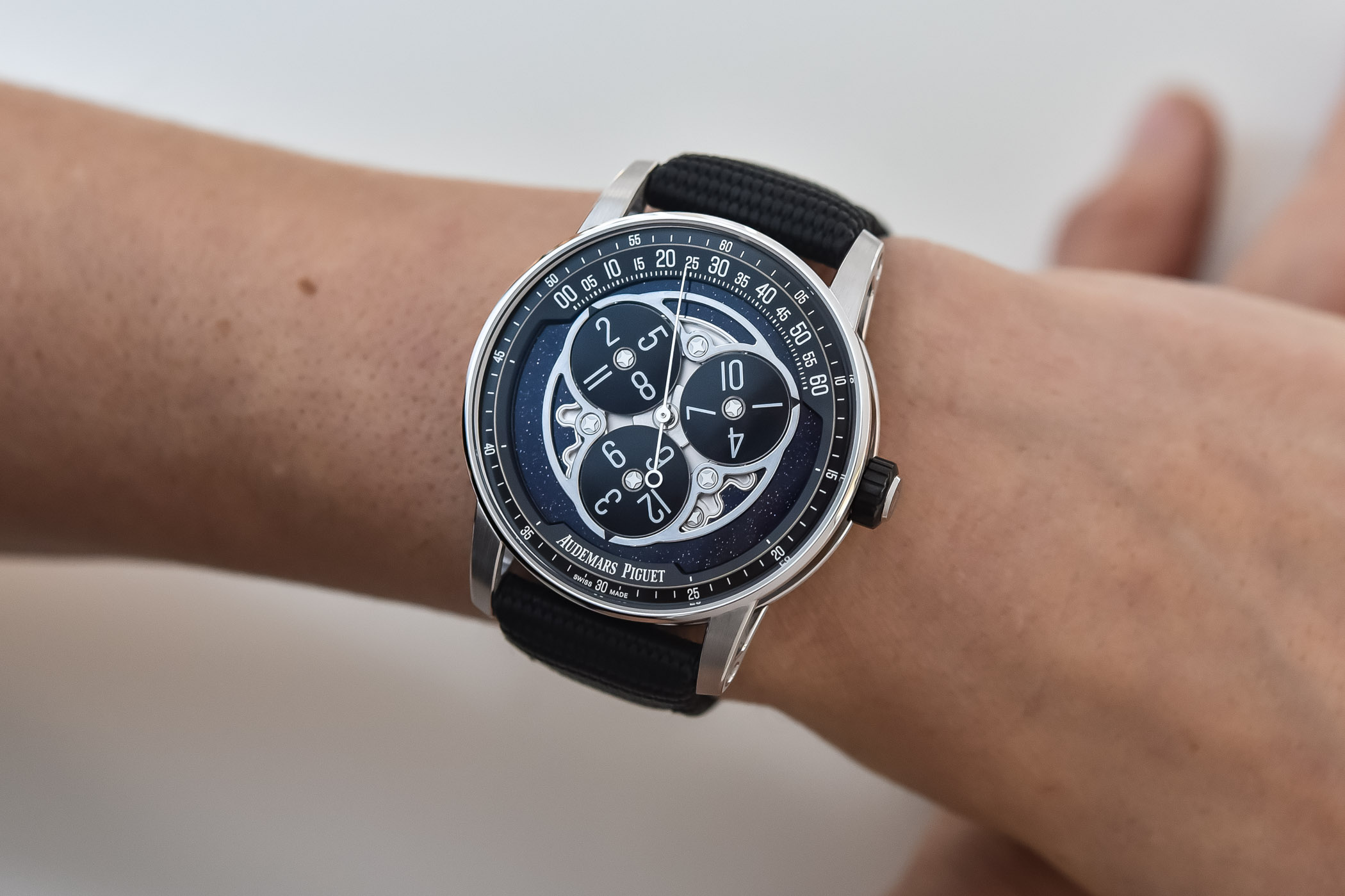
Introduced a couple of weeks ago, the Code 11.59 by Audemars Piguet Starwheel came as a surprise. Not that this original display of the time feels irrelevant when looking at the brand’s heritage (far from that), but it isn’t exactly what we expected the brand to revive. Despite its fascinating nature, wandering hour displays are rare, but Audemars Piguet has decided to introduce something more playful and almost kinetic inside the case of its Code 11.59. And that isn’t a bad thing, after all. Now that we’ve had a chance to experience this new Starwheel in the metal, here’s what we can tell you… (Spoiler: compared to the 1990s Star Wheel, it really is a different beast.)
One of the oldest non-traditional displays
Despite the highly modern result and the fact that wandering hour complications have been used by some of the most creative indie watchmakers of the last two decades (think Urwerk, Hautlence or Moser) or more traditional brands (such as Parmigiani or Arnold & Son), this complication has been around for centuries. It actually is one of the oldest non-traditional ways to display the time I can think about.

Behind the Starwheel concept, and all other watches with a wandering indication of the hours, lies an important clock made for Pope Alexander VII (1599-1667, appointed Pope in 1655). As with many inventions, the creation of this display starts with a problem to be solved. Suffering from insomnia aggravated by the loud ticking of his clock, the man previously known as Fabio Chigi ordered a night clock from one of the best clockmakers known at the time in the city of Rome, the Campani brothers. In 1655, right after the start of his Papacy, he requested his secretary, Cardinal Barberini, to have a silent night clock built for him. And because he couldn’t read the time in the darkness of his bedroom, he also requested that the silent clock be legible during his sleepless nights.
Following this somewhat unusual request, brothers/clockmakers Giuseppe, Pietro and Matteo Campani had to rethink the entire concept of a clock. No hands, a silent mechanism and a luminous display. The brothers were part of a family of inventors, clockmakers and philosophers, typical of the Renaissance era. Giuseppe (1635-1715) was known as the best maker of optical instruments of his age and developed expertise in grinding and polishing lenses. One of his telescopes allowed Cassini to discover several moons around Saturn. And Constantijn Huygens, who also happened to be the brother of Christiaan Huygens (a name that might sound familiar to a few watch enthusiasts), owned several of Campani’s telescopes. Matteo Campani was a mechanic and philosopher who also worked on clocks and horology in general.
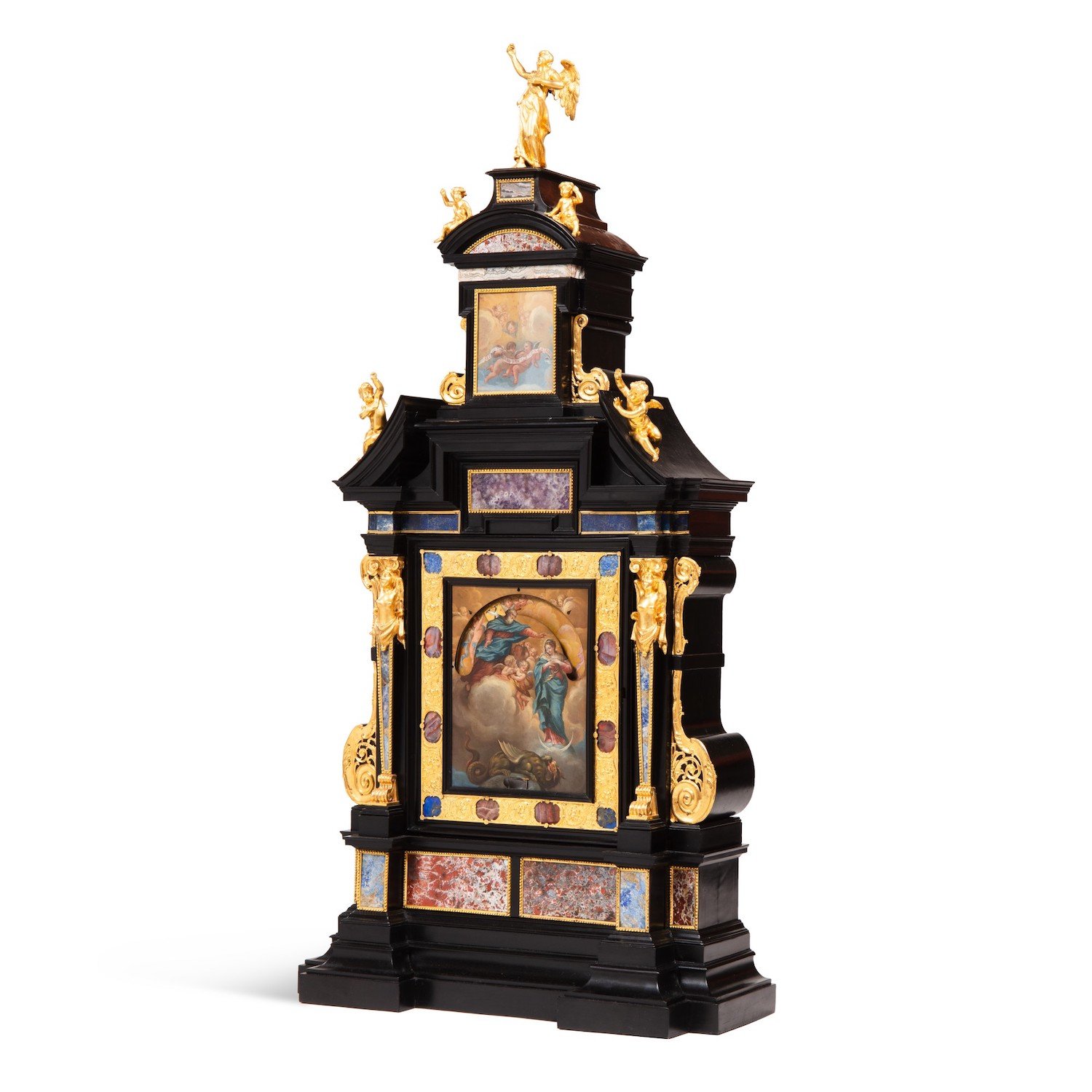
To achieve the Pope’s wishes, the Campani brothers sought help from the third brother, Pietro Tomasso Campani, who created a silent escapement for the clock. Now that issue of the loud ticking was solved, the brothers tackled the other challenge of night-time legibility. The Campani brothers presented the Pope with the first wandering hours clock, where the time was read on a semi-circle in an aperture that indicated the quarter hours and was lit from the inside. This night clock was the precursor of the wandering hours system.
The Campani brothers made more than just one of these clocks; some are still ticking today, such as the 1683 example exposed at The British Museum or this model offered by Sotheby’s here.
The Rise, Fall and Resurgence of Wandering Hours
Following its introduction in table clocks, the wandering hours complication appeared in pocket watches without backlighting. While the arc-shaped aperture still measured 180 degrees, the minutes and quarter hours were graduated for greater precision. During the following century, these watches were offered as prestigious gifts, often bearing the effigy of famous personalities.
During the 19th century, the popularity of these pocket watches and clocks started to wane. The timekeepers produced at this time presented a sector of 120 degrees to facilitate time reading. The quarter hours disappeared along with the small window for the hours, although the display remained mysterious as the mechanism was still hidden. The 360-degree wandering hours version made an appearance at this time too, although it was gradually replaced by the jumping hour that was to become typical of the Art Deco period during the first half of the 20th century.
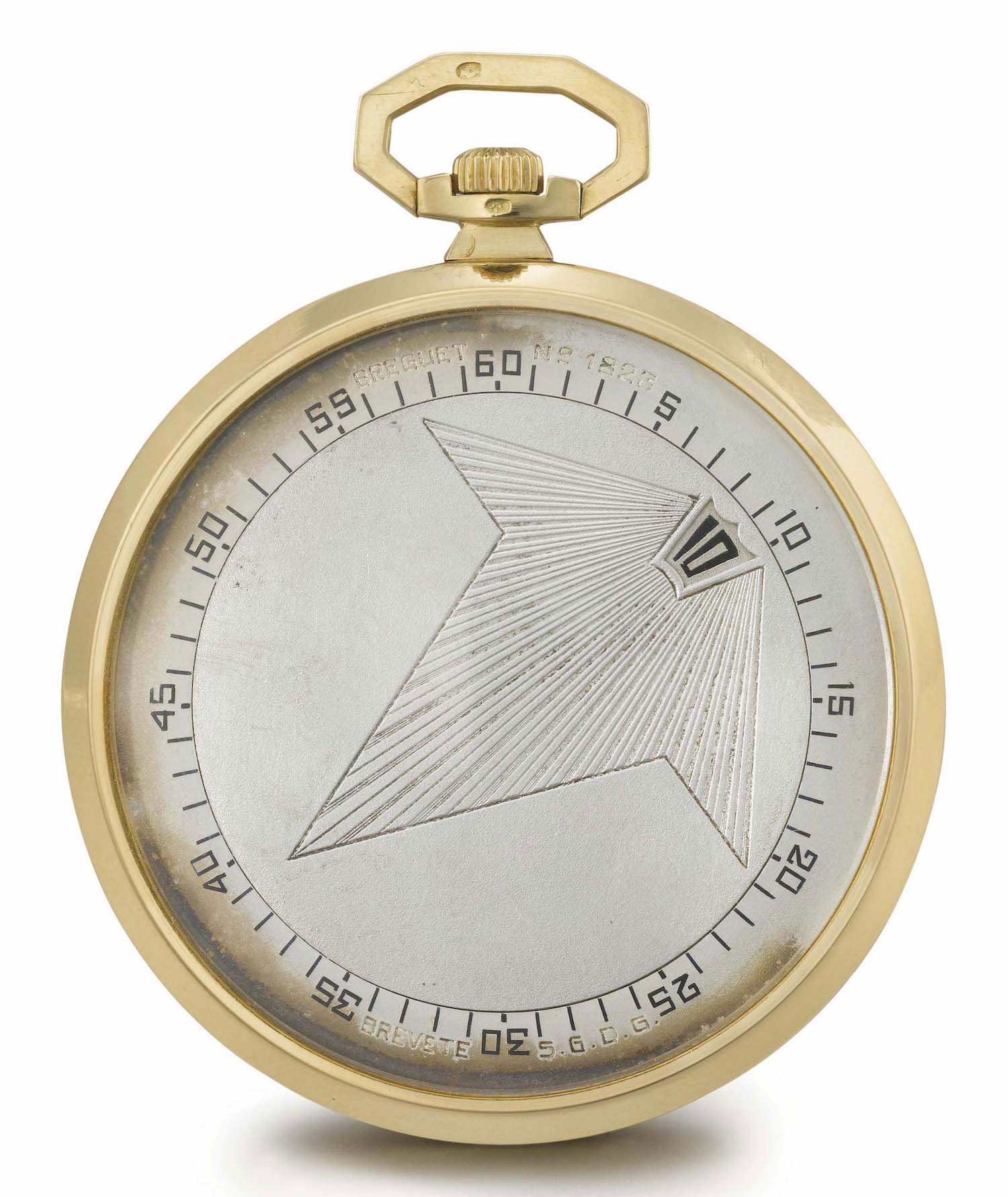
The idea of wandering hours fell into oblivion after WWII, when watches became far more specialised and tool-oriented – think about dive watches, racing chronographs and all the sports models of the 1950s/60s. The quartz crisis signed the temporary end of this concept… until 1989, and the resurgence of classic mechanical watchmaking and the rediscovery of the wandering hours complication. As told by AP, the story is that of a watchmaker who found out about this complication in an article from the Journal Suisse d’Horlogerie. Intrigued by this no-hand display, a team of watchmakers started prototyping what soon became the Star Wheel watch.
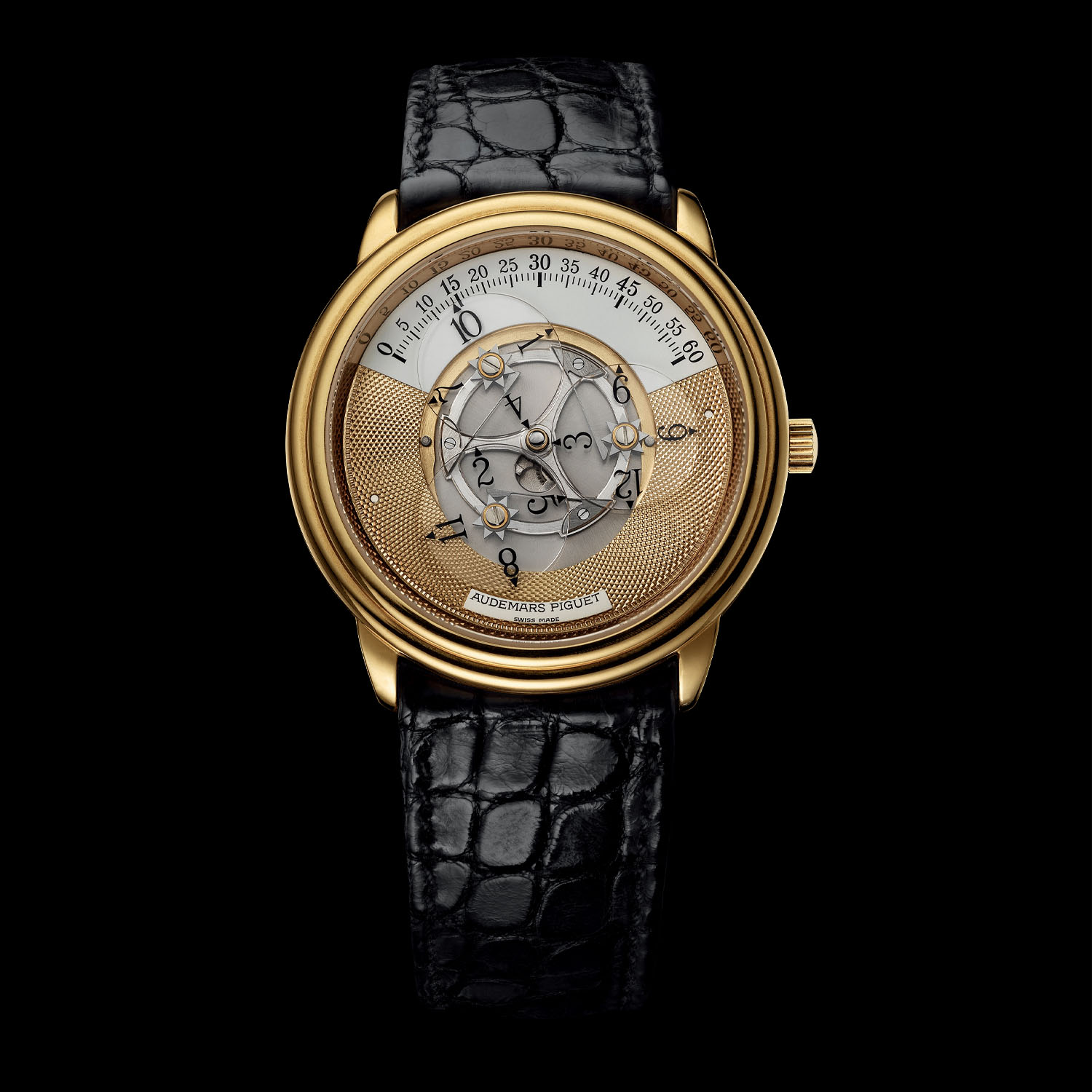
After 18 months of development, the original Audemars Piguet Star Wheel watch (reference 25720) came to life in 1991. The name was probably chosen in reference to the three stars that support the sapphire hour discs fixed on a large central wheel and because the movement and display, composed of transparent sapphire discs revolving on top of the dial, dispelled the mystery of its modus operandi. The watch was otherwise ultra-classic, with a 36mm diameter, a round case with a double-stepped bezel and an ultra-thin JLC-based automatic movement on the back (AP calibre 2124, base JLC calibre 889). The earliest models were gold or platinum, with a smooth-finished and graduated arch on top and a lower part decorated with a barley-corn guilloché pattern.
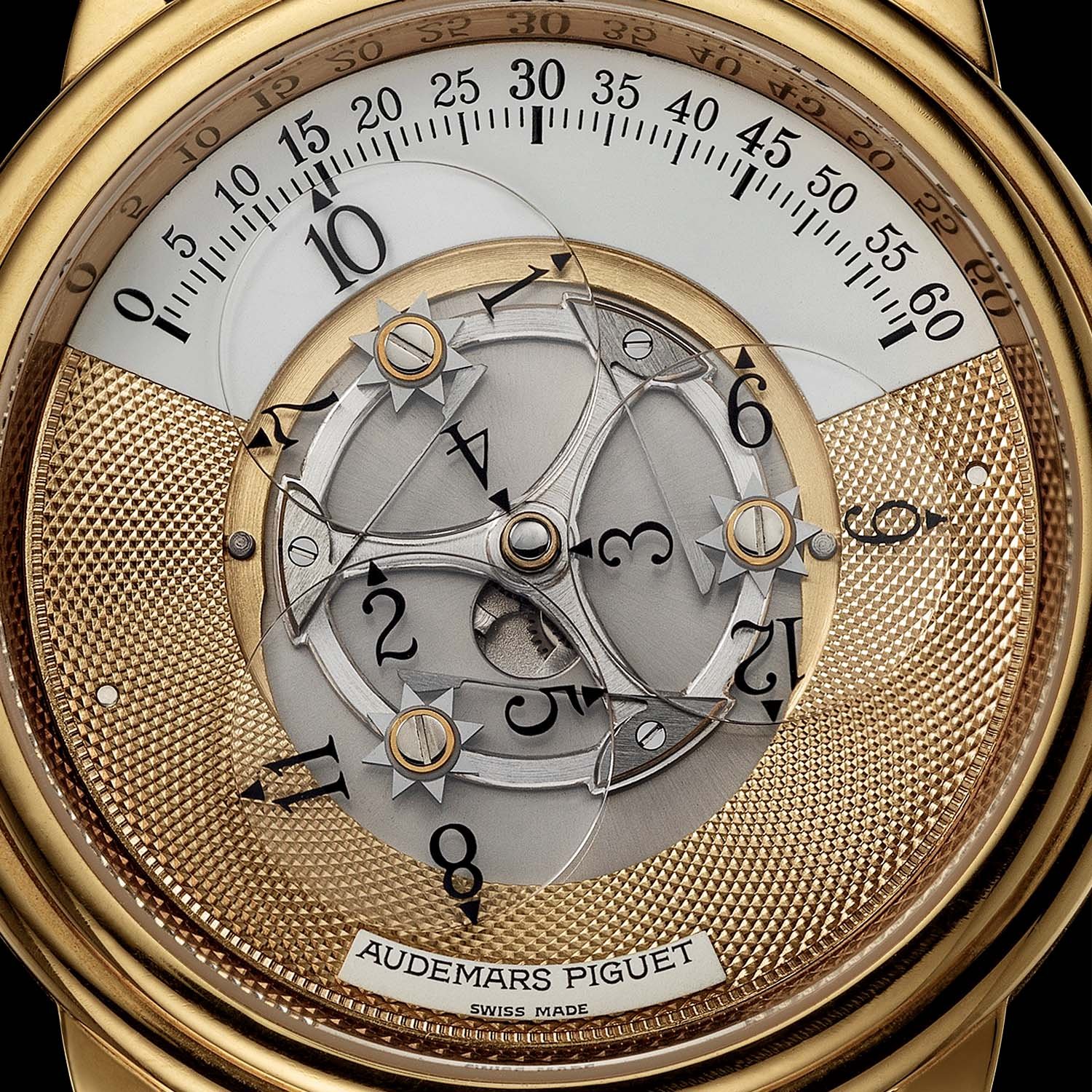
The display consisted of three rotating sapphire discs, with the hours printed on their surfaces (each with four digits), fixed to a central rotary wheel. Each disc was attached to the central wheel by an 8-toothed star-shaped wheel, allowing the discs to jump every hour while the central wheel made a complete revolution around the dial in three hours.
Over the years, the classic Star Wheel watch appeared in many iterations, with different types of engravings (replacing the barley-corn guilloché), some with tiger-eye dials and some with precious stones. Despite its immense horological interest, the Star Wheel remained a niche model, with low production numbers and a popularity sustained exclusively by seasoned collectors. Not a mainstream model, to say the least. Between 1991 and 2003 (the end of the production of this complication), around 30 Star Wheel models were produced by Audemars Piguet, including Millenary models, depicted above.
Some of the most notable models of this sub-collection were a series of watches made after historical models built for John Shaeffer, with a 33mm cushion-shaped case with various additional complications, such as the model presented above with a minute repeater. On another note, it is important to mention the influence the Star Wheel had on the industry, specifically Urwerk, which made the wandering hours display a signature element of its first watches, starting with the 1997 UR-101 and UR-102 watches, a highly contemporary take on the Campani’s display and a descendant of what AP had done a few years before.
The Comeback of the Starwheel, in very different attire
Let’s now talk about the surprise(s) that came together with the launch of this Code 11.59 by Audemars Piguet Starwheel. First of all, the surprise comes from the comeback of the complication itself, which has been out of the collection for about 20 years. While the 1990s Star Wheel watches have gained attention recently, they were far from successful in the past and have never really caught up on the market when available. It’s only been the last couple of years that the classic Star Wheel has become somewhat hyped. Before that, you could get one for a pretty small budget.
The second surprise is the watch itself. There’s no turning around; this new Code 11.59 Starwheel has very little in common with a 1991 reference 25720, at least visually. There are some strong similarities regarding the way the complication is built. The design, on the other hand, is radically different. From traditional, discreet and almost old-school, we’ve entered an era of boldness, modernity and visual audacity. Don’t necessarily take these words with negativity. Times are changing, and so does Audemars Piguet.
What we’re looking at is probably the most playful and striking edition of Code 11.59. This watch has been AP’s vessel for Haute Horlogerie complications for about three years now with openworked tourbillons, some with an additional chronograph function, but also perpetual calendars and even one of the rare Grande Sonnerie movements available currently on the market. This new Starwheel plays in a slightly different league than the others. It’s not so much about the complexity of the function; it’s all about the animation of the dial, the originality of the display and its reinterpretation with 2022 design language in mind.
The case is typical of Code 11.59 by Audemars Piguet. And yes, it is a rather impressive case that needs to be experienced in real life to be fully understood. It seems simple at first, with a classic round dial opening. But move it slightly to the side, and you’ll discover all the work done by the designers. The lugs are opened, and the construction consists of two metallic elements framing a black ceramic central container with an octagonal shape. The surfaces combine finely brushed and polished finishes (reminiscent of the RO), and there’s a surprising curvature from 12 to 6 o’clock. The crystal follows this line and creates unexpected distortions. So yes, the first 3-hand models were not the best ones. But the dial was to blame. The case of Code 11.59 is something special.
The new Starwheel retains the 41mm diameter of all models, with a relatively slim profile of 10.7mm. It’s made of 18k white gold and black ceramic, and so is the crown. The finishing is very detailed – the polished bevels on the inner side of the lugs are there to prove it. A continuation of the modern look can be seen with the textured strap with rubber coating, again far from the classic alligator leather you’d expect from a complication watch.
Now let’s talk dial and display. To me, the main evolution of the new Code 11.59 by Audemars Piguet Starwheel has to do with the discs. The old model was all about the sapphire discs and the way the magic behind the wandering hours complication was revealed in all its glory. And in addition, these sapphire discs made the watch light, airy, and delicate. The 2022 reinterpretation of the Starwheel has solid discs and a seconds hand – the latter quite drastically alters the whole idea of the slow-moving complication in the original models. The short video below will give you an idea of how the display works:
With this 2022 Starwheel, we have a blue aventurine base dial, which has been used frequently in this collection and works pretty well – and it’s a reference to the starry theme of the watch. The dial is framed by a black inner flange with two scales. One displays the seconds, and the other, on a 120-degree arch, is used for the minutes and is classic for a Starwheel watch. The main evolution is on the discs, which are now made of aluminium and black-tinted PVD before receiving an opaline sandblasted finishing touch. These discs, which rotate on their own axes, are “like planets in the tiny universe of the dial” (I must quote AP for that). The whole working principle is identical to the 1990s Star Wheel watches, as even if you can’t see them, the 8-toothed star-shaped wheels are still present underneath the discs.
Powering this Audemars Piguet Starwheel is an in-house movement, the calibre 4310, based on the calibre 4309, itself using the base that was introduced in the time-and-date Code 11.59 in 2019. This modern automatic movement has replaced the 3120 and is the brand’s cornerstone calibre. Contemporary in its conception, it retains its 70-hour power reserve despite the wandering hours module on top. The back reveals a refined decoration, with polished edges, Geneva stripes, perlage and an openworked solid gold rotor.
What to think about the Code 11.59 StarWheel?
If we take the three brands that classically compose the Holy Trinity of watchmaking – Audemars Piguet, Patek Philippe and Vacheron Constantin – you’ll see that each has taken its own route. VC is, to me, the most traditional, with a vintage approach. PP plays on heritage with a modern twist in the colours, with a fairly controlled audacity. AP has decided to move into a bold and ultra-modern world, despite remaining a master of complications. The skills of its watchmakers are undeniable and traditional complications are still present in the brand’s portfolio. But these aren’t encased in classic dressed watches anymore.
The new Starwheel is yet another example of this strategy. Surely, the complication has been treated in a traditional way, mechanically speaking at least. The design and the overall feel of the watch are just not that of the 1990s watches anymore. Love it or hate it, it’s up to you. At least AP is consistent in this combination of fine craftsmanship and audacious habillage for its watches. AP has decided to speak to a target audience that has long been defined, and I’m not sure I’m part of it. That being said, the new Starwheel is a watch that is mechanically interesting but also has pedigree and undeniable expertise in the way it is manufactured. Its design is deliberately bold and profoundly modern: this is the AP of the 21st century.
Availability & Price
The Code 11.59 by Audemars Piguet Starwheel (reference 15212NB.OO.A002KB.01) is now available as part of the permanent collection. It is priced at CHF 48,000 (excl. taxes) or EUR 57,100 (incl. taxes). For more details, please visit www.audemarspiguet.com.

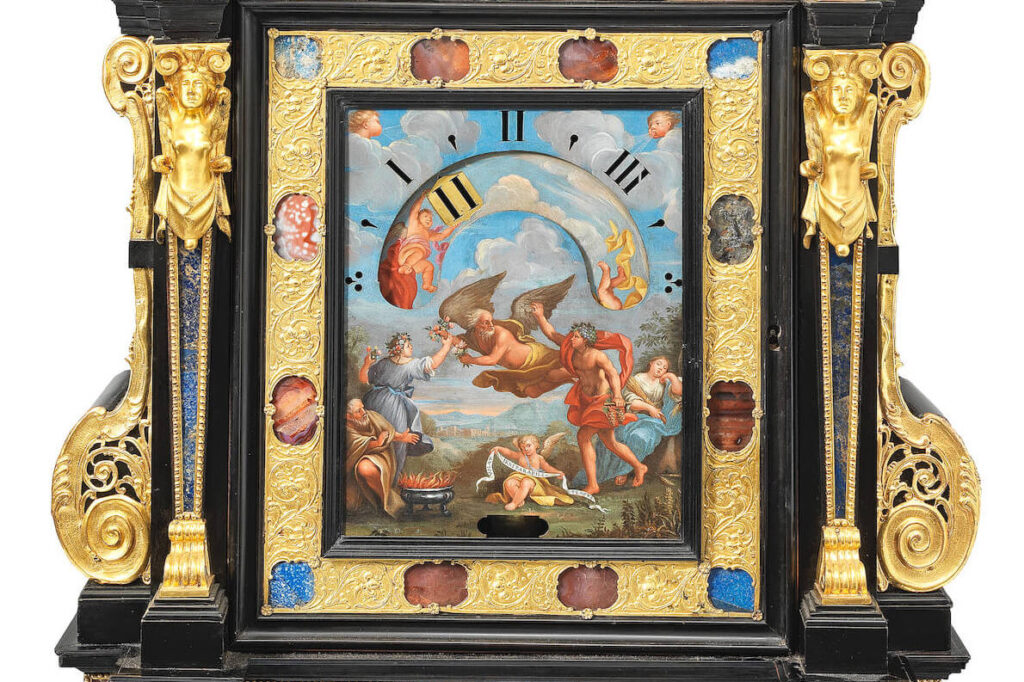
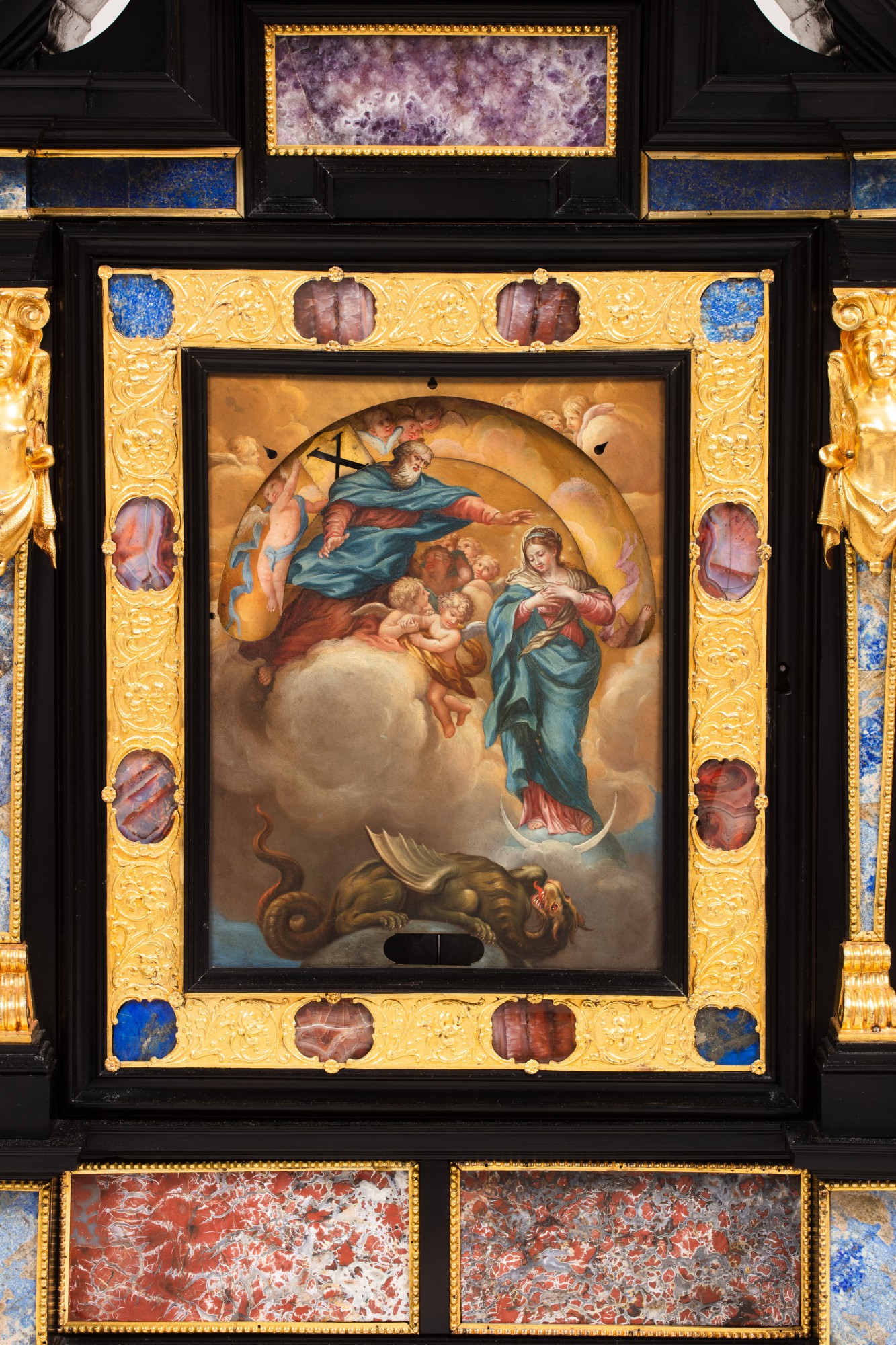
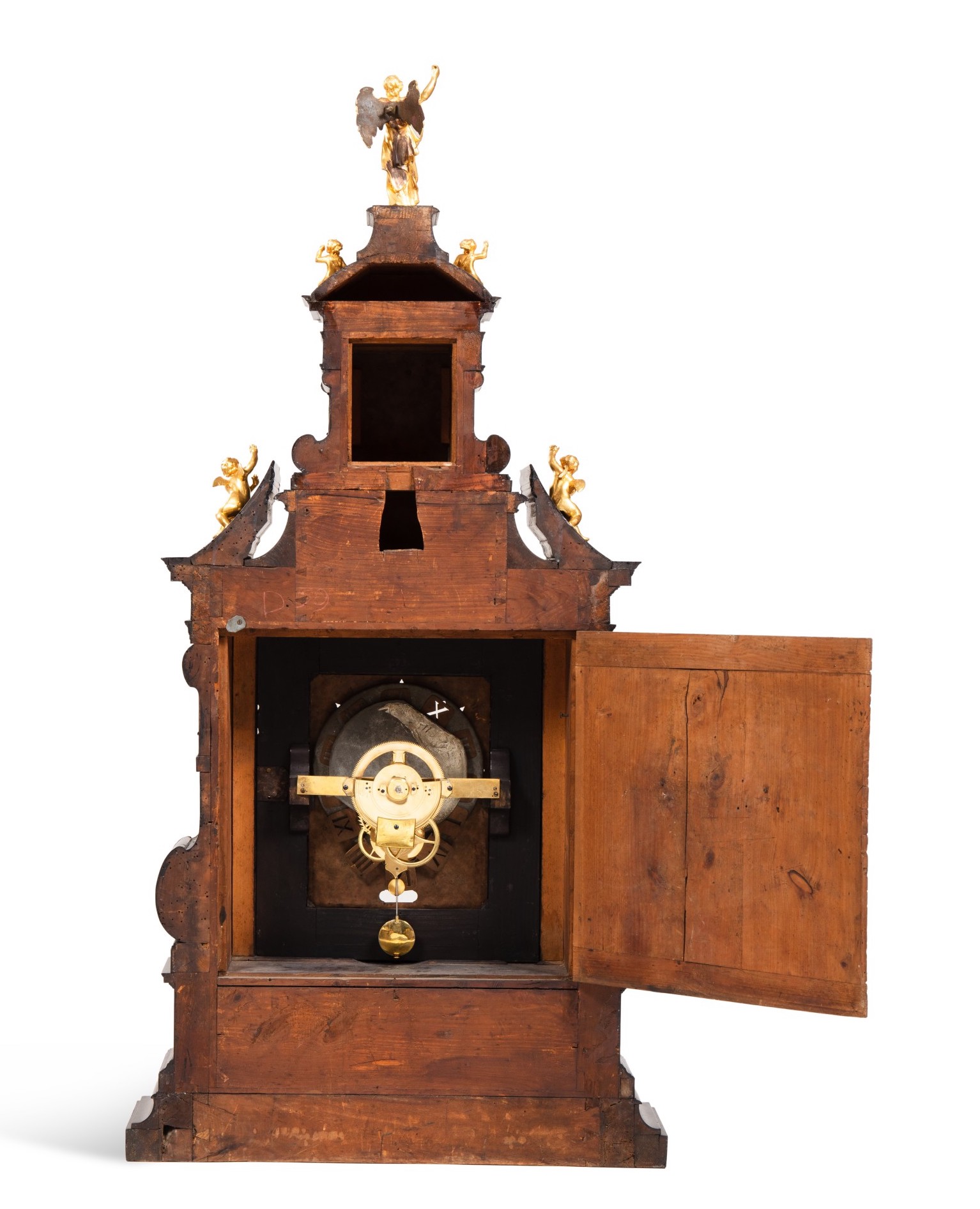


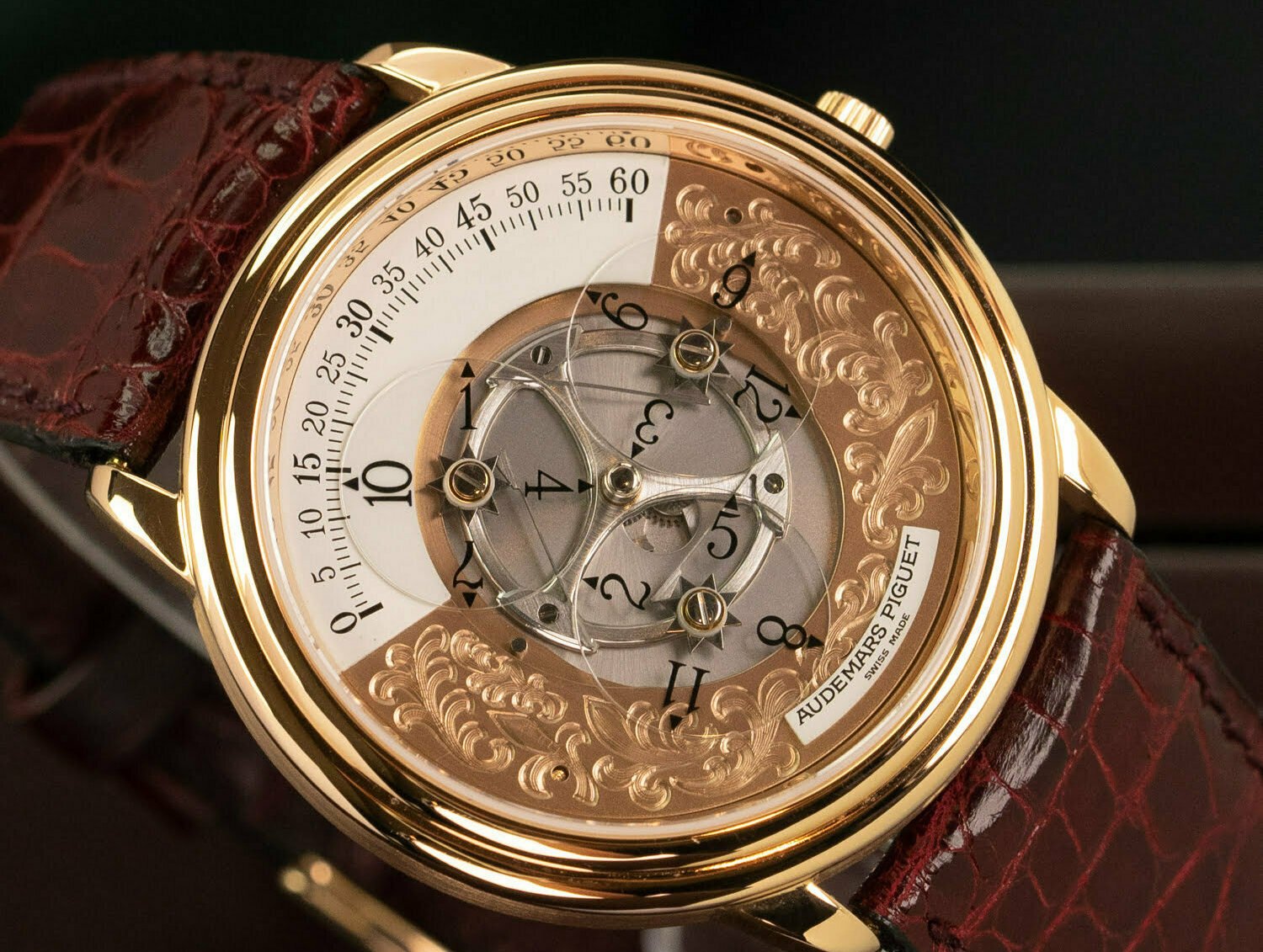
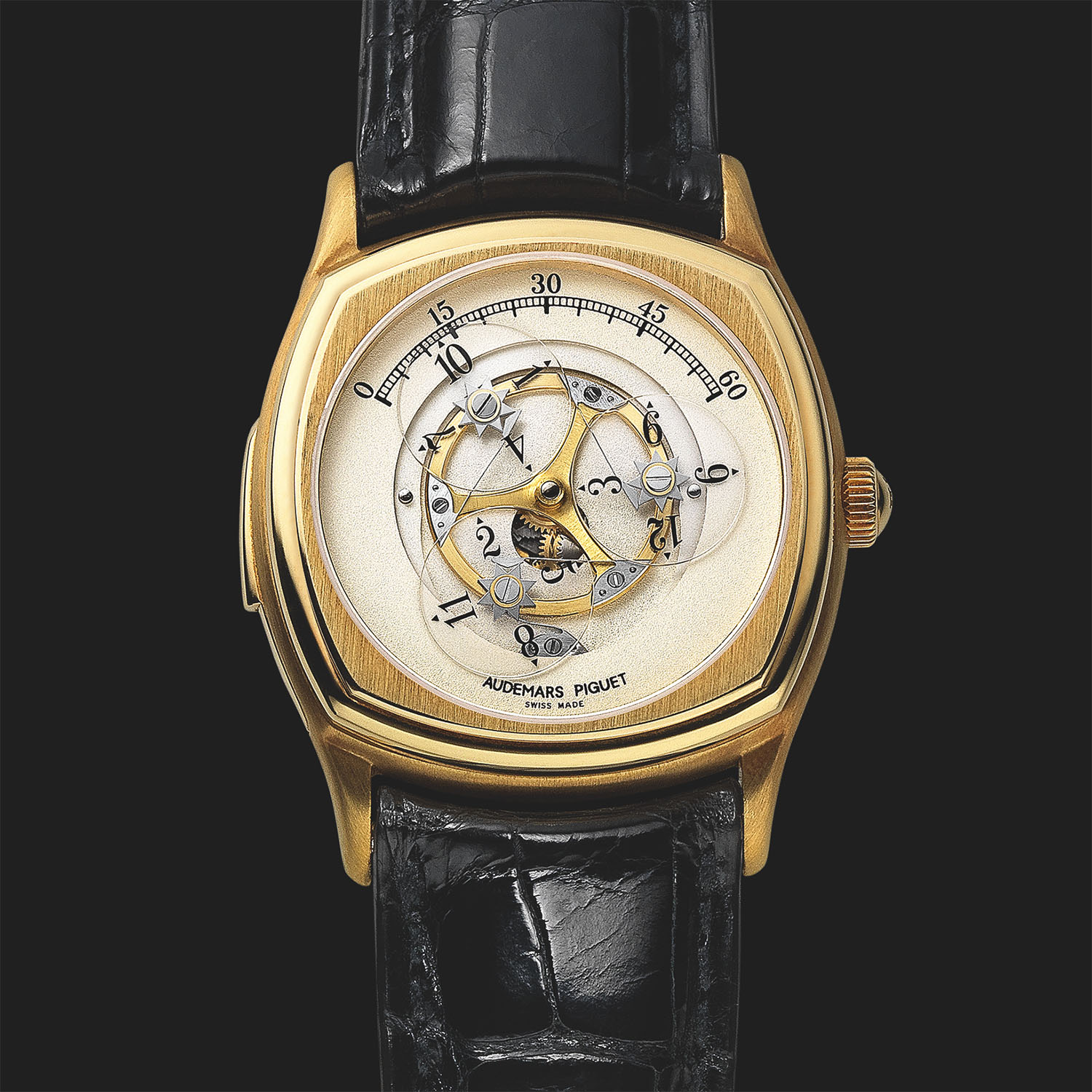
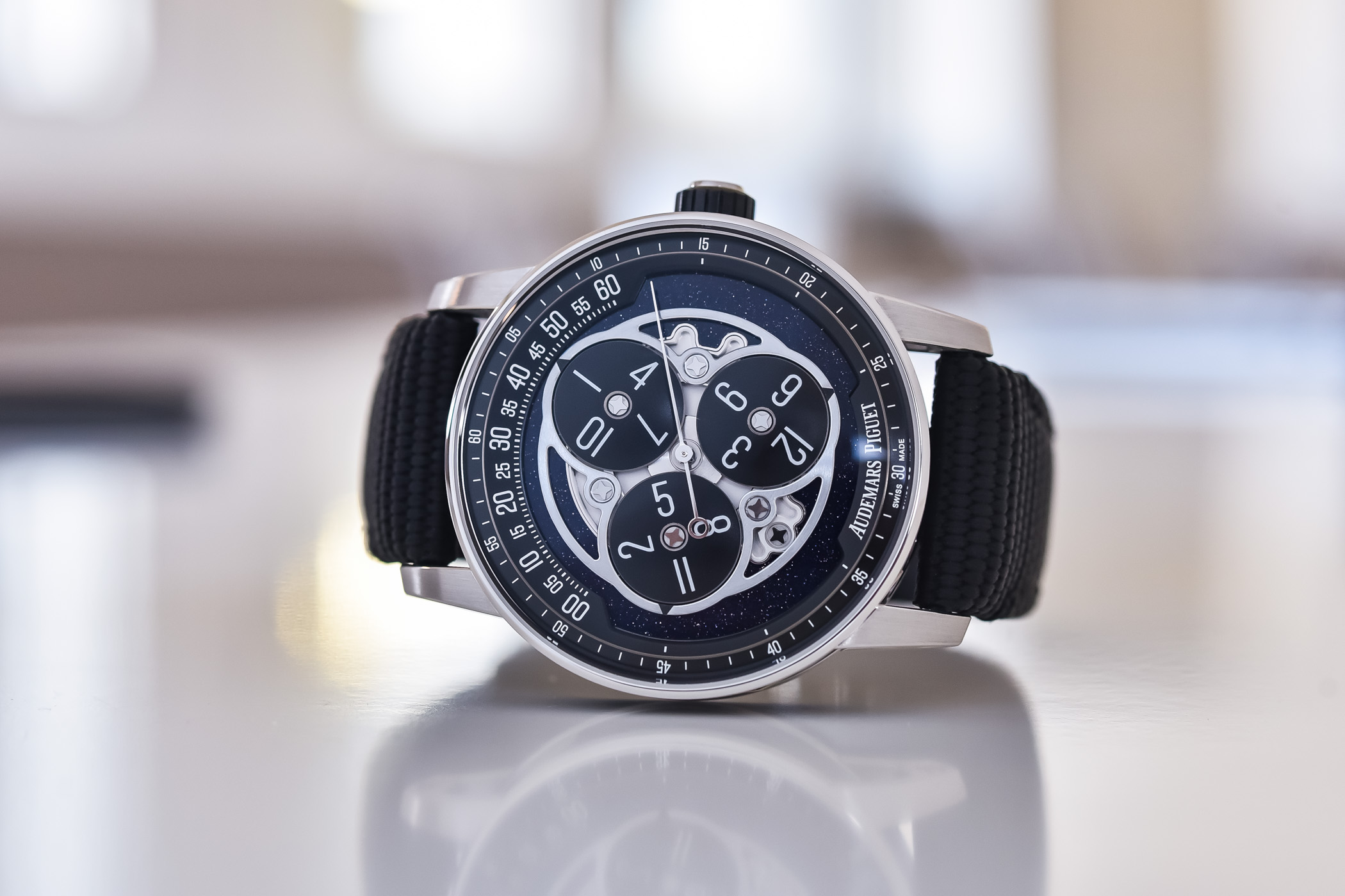
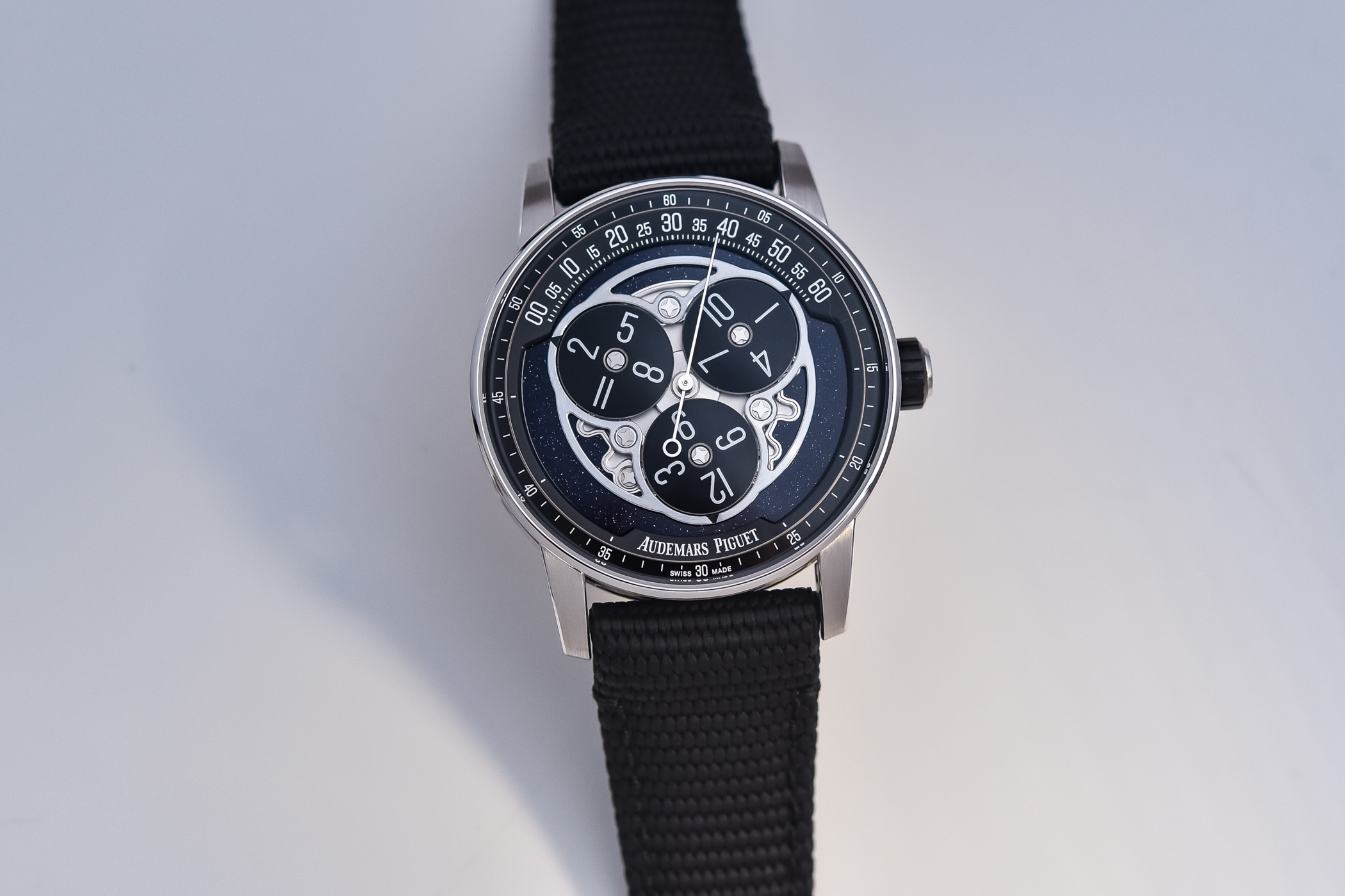
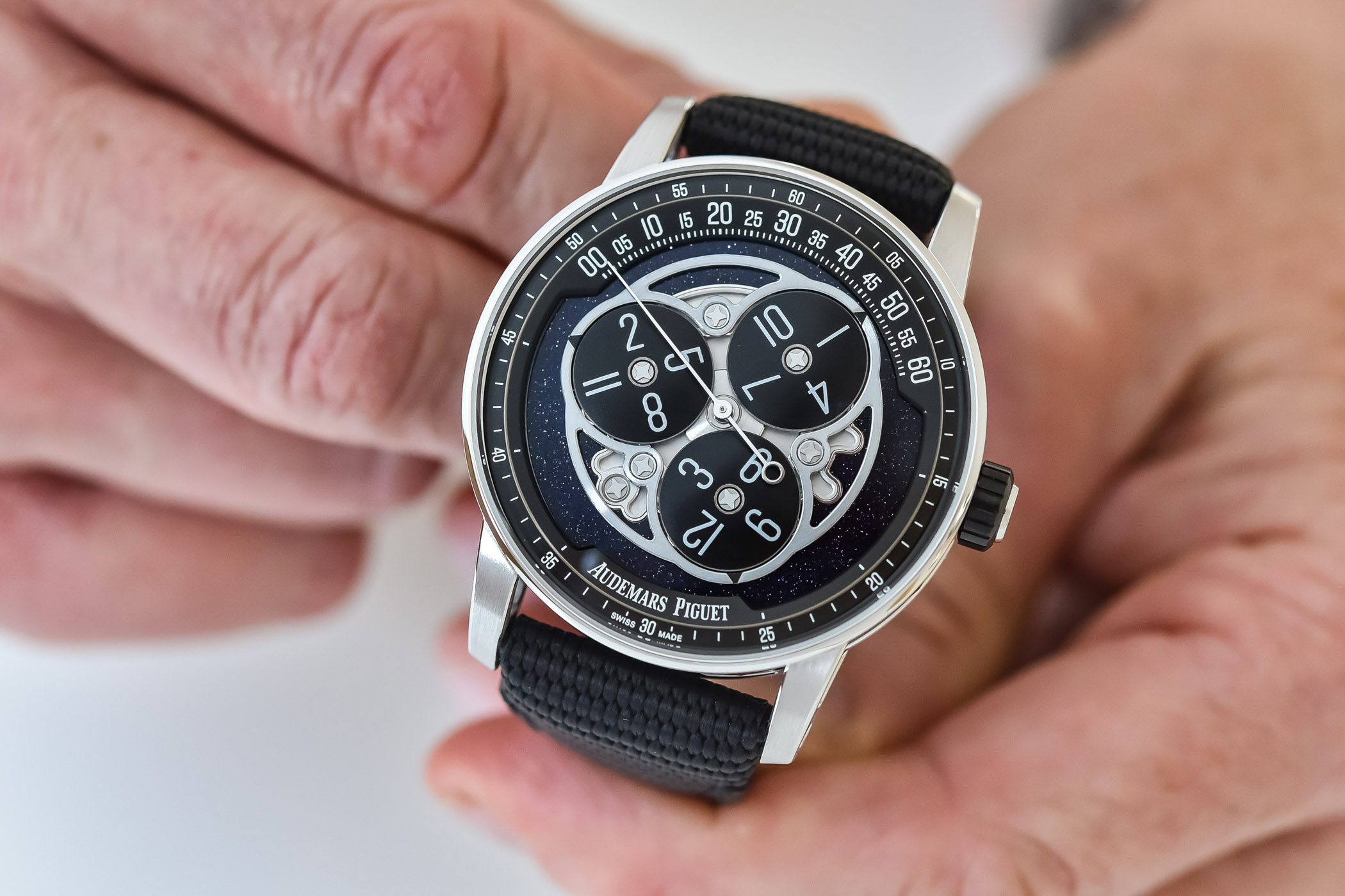
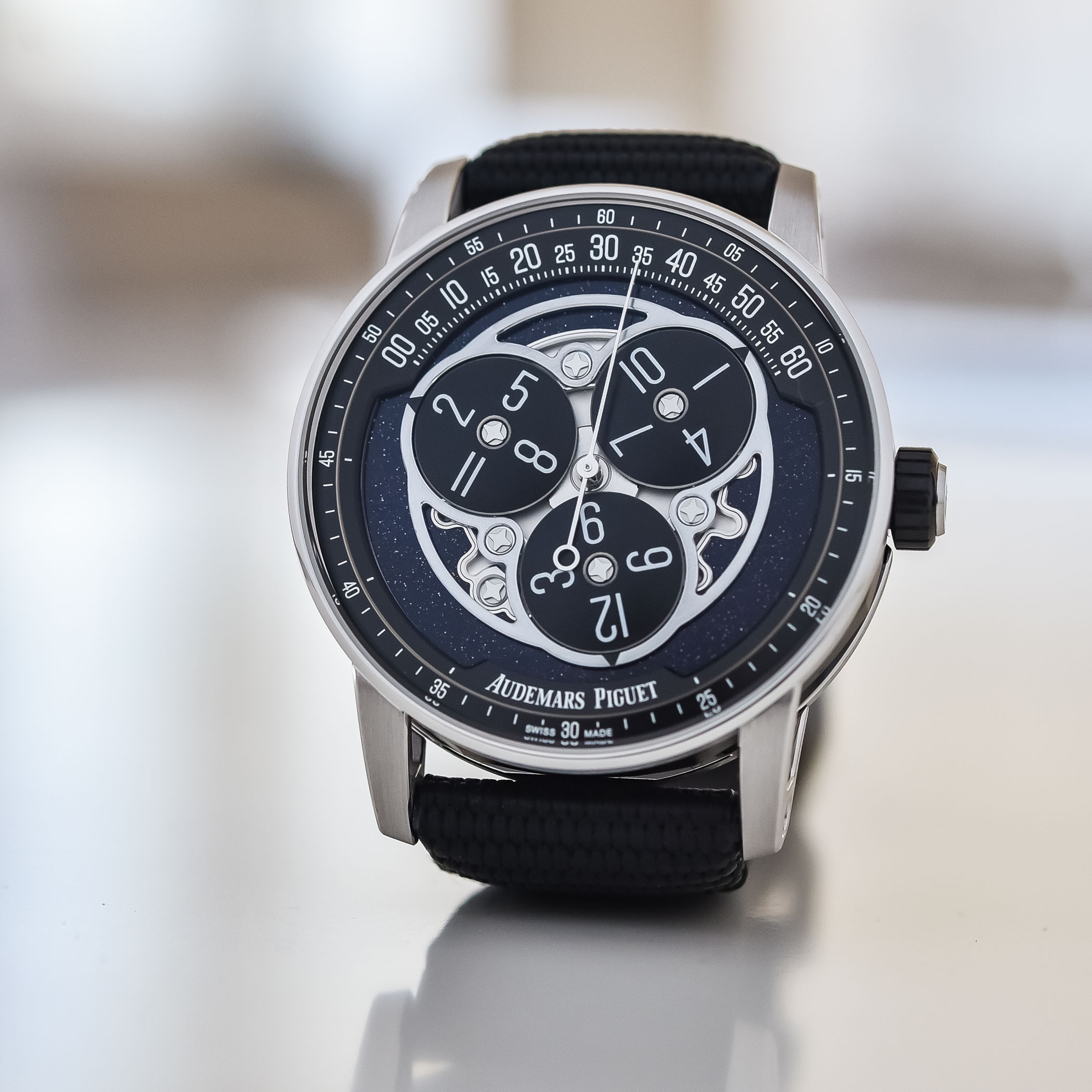
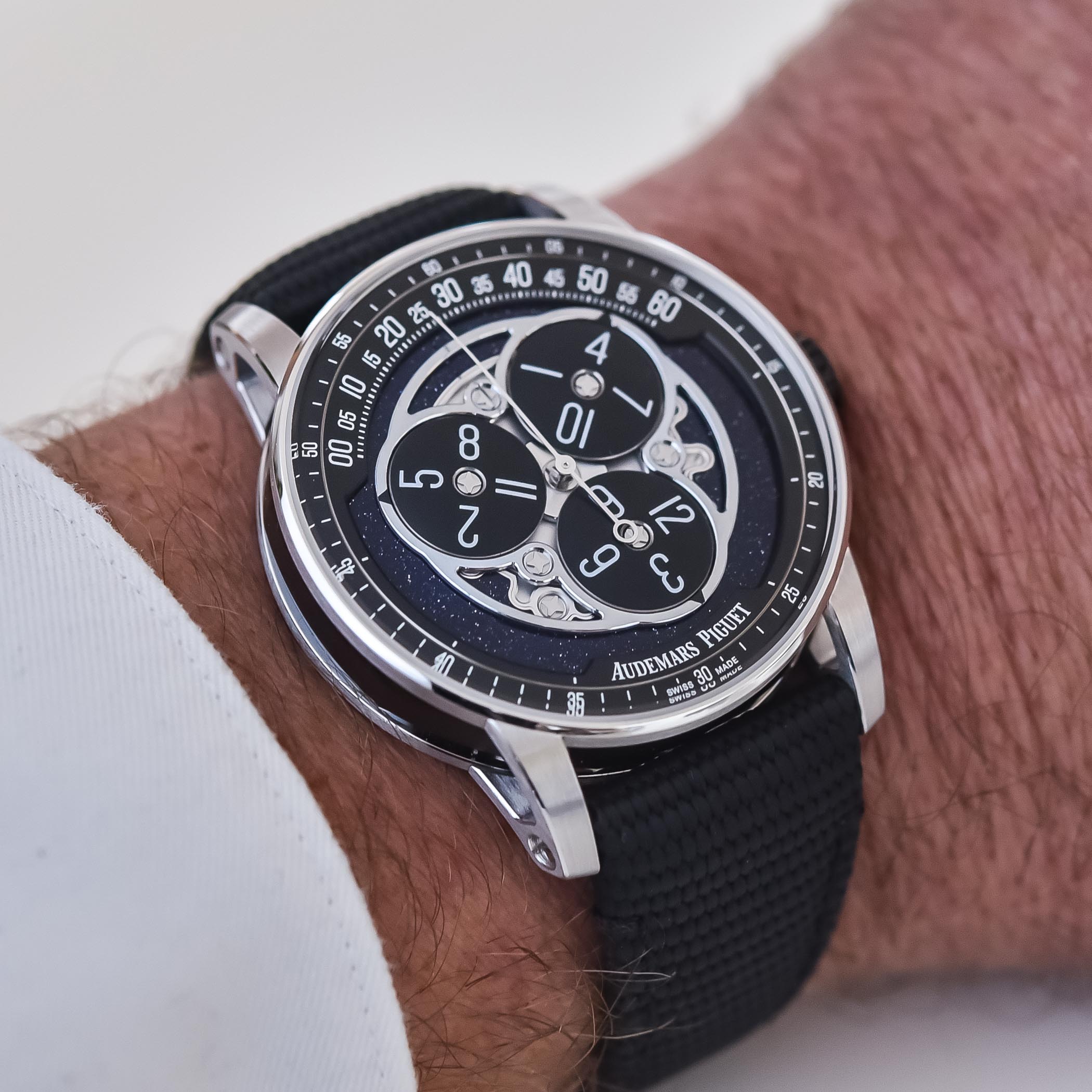

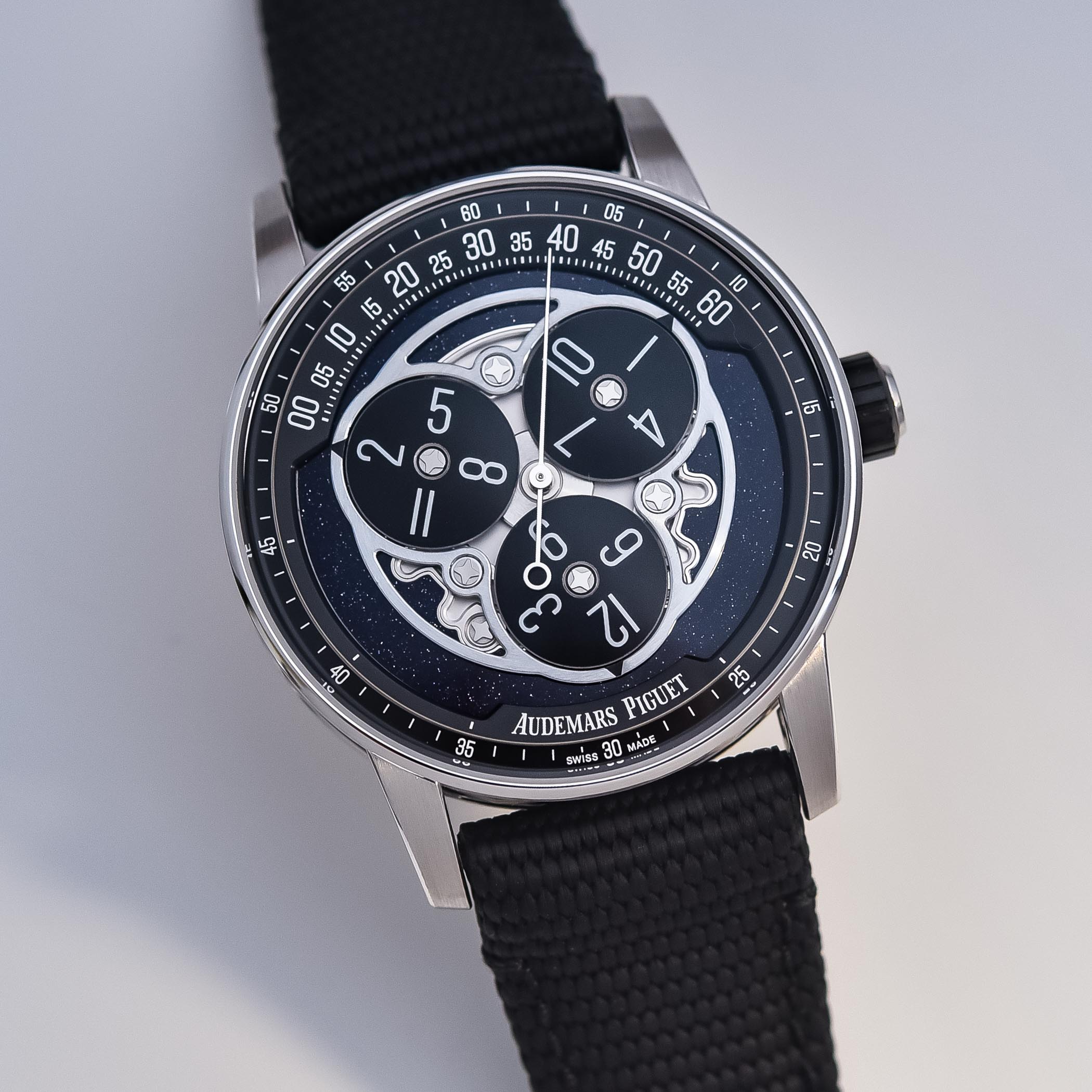
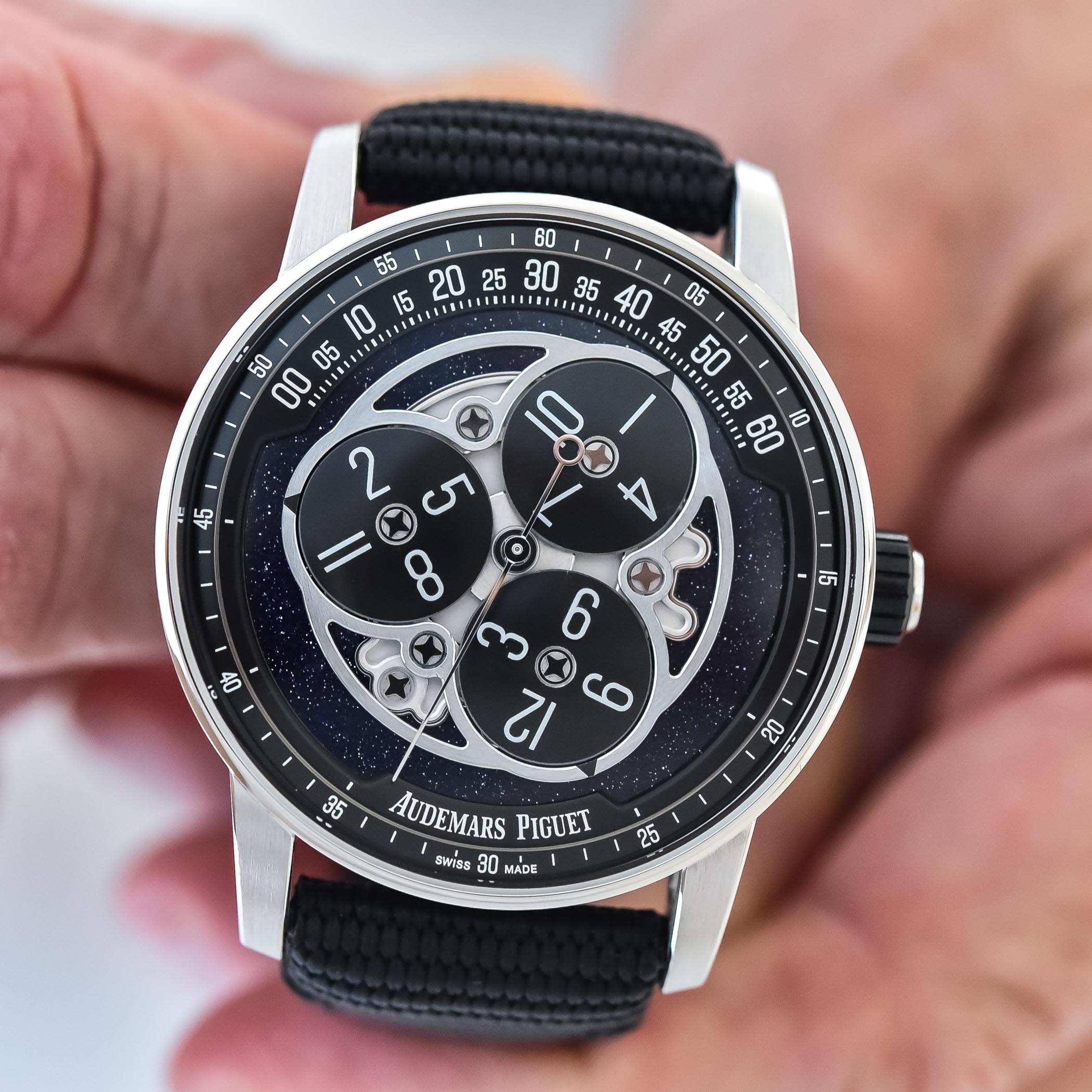
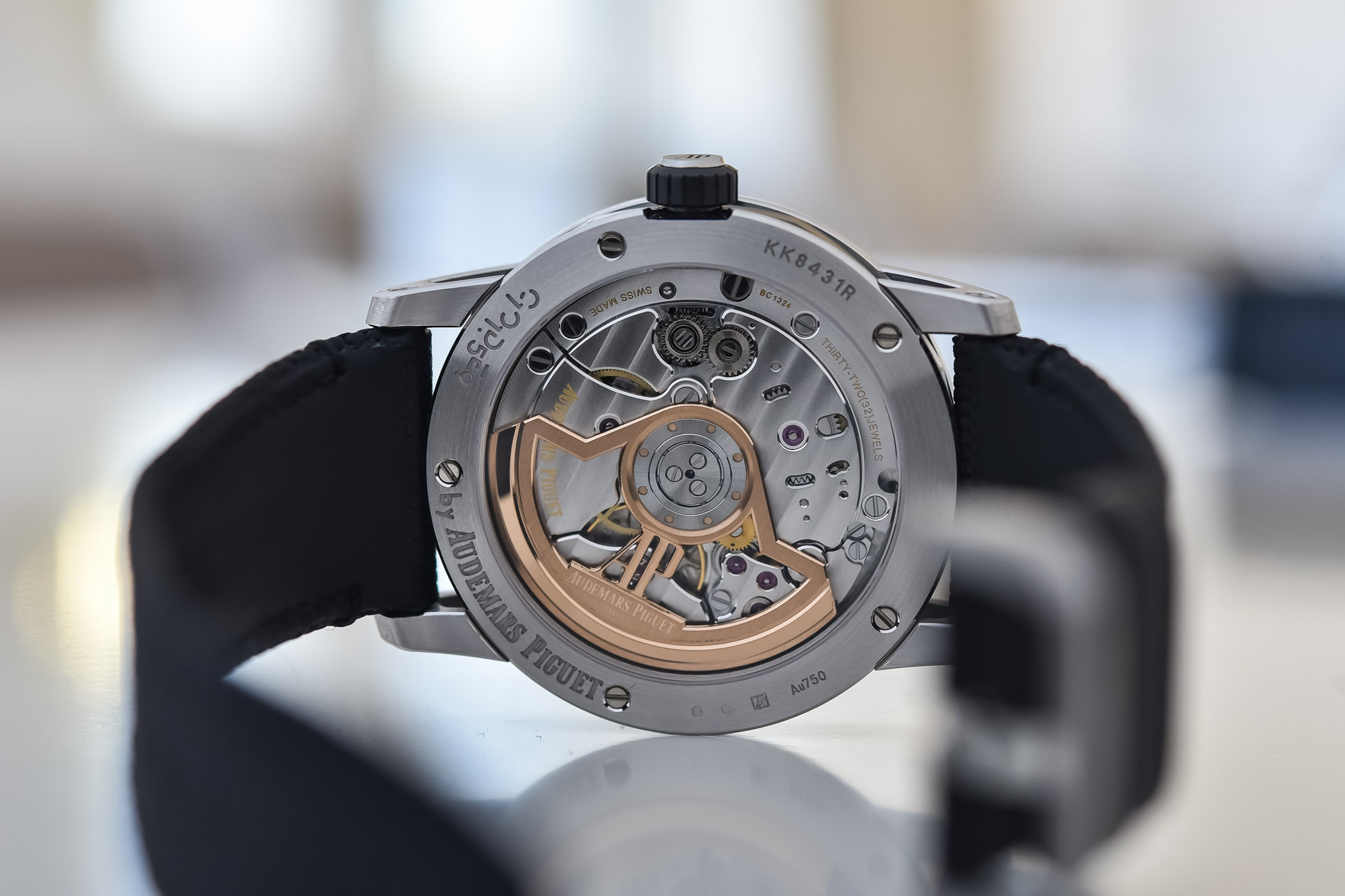

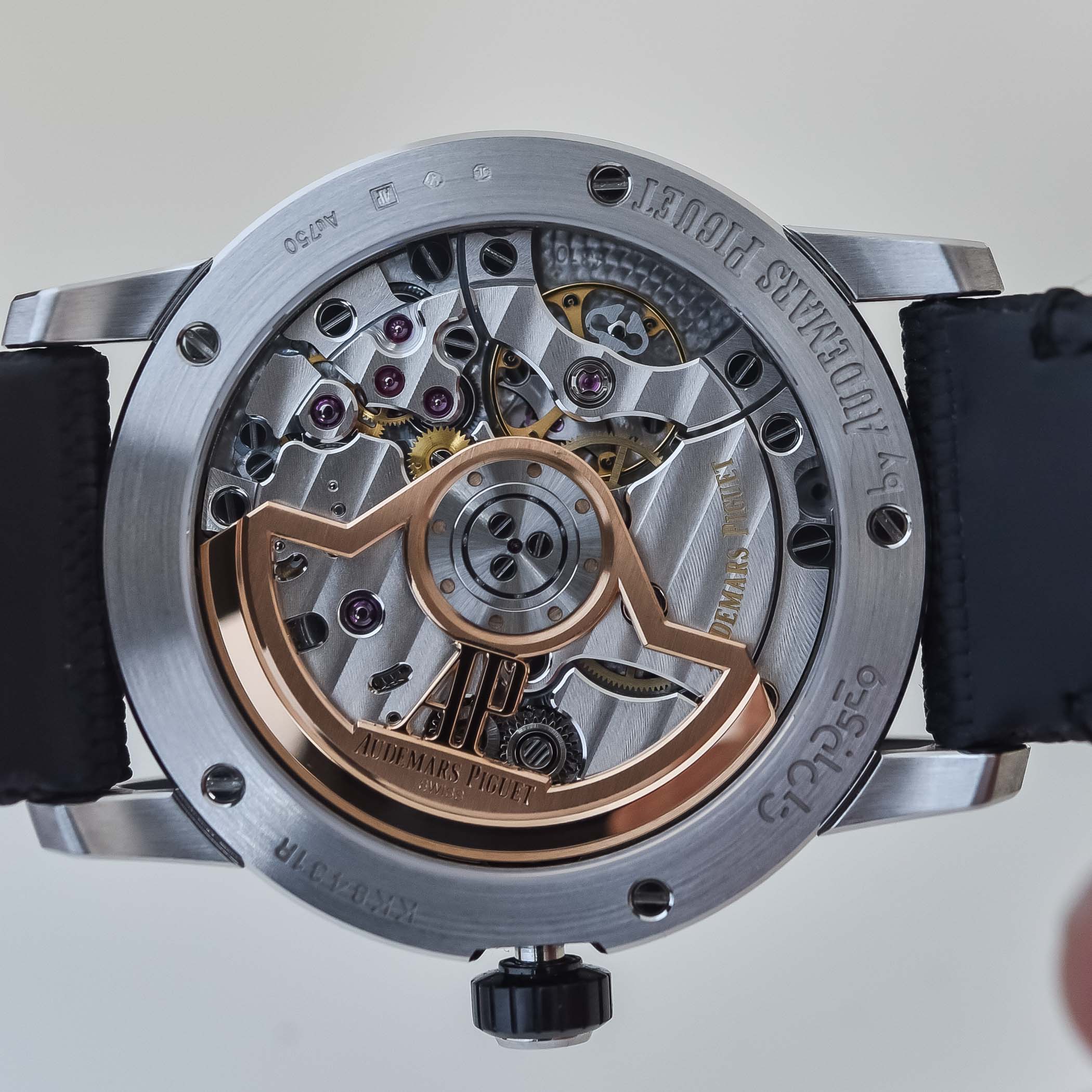



5 responses
I loved the old star wheel and love that they brought it back in a modern iteration. Though I’d change two things: get rid of the seconds hand, and make the wheels transparent/translucent black, and let a full starry background be visible underneath.
@D I agree. I’d also ditch the second-hand and would love to see more of the aventurine background, although I’m not sure it would look good with the partially metal background and the module.
I really like the 11.59 series even though it got a lot of criticism initially. The Starwheel is very cool, too. However, what I do not understand: Why must they be this large? A 37mm 11.59 would be something I‘d want to buy, but in its current form they simply look stupid on smaller wrists.
Finally a new watch by AP that lives up to the holy trinity status.
The same old story for AP, like a fat guy coming out of the shower , the more they move forward the more people want them go back !